Transform Your Custom Deck with Built-In Seating Solutions
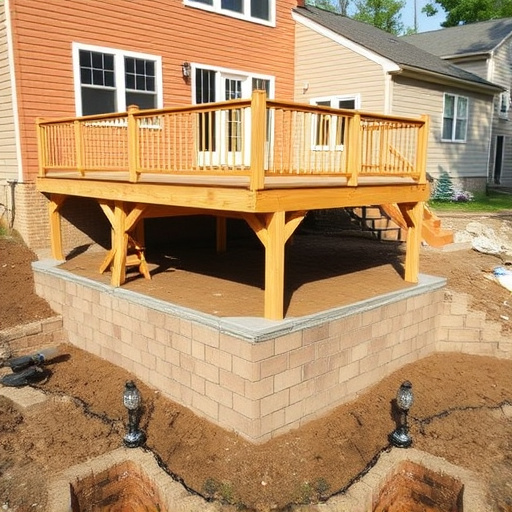
Before designing a custom deck, assess layout and functional needs, consider aesthetic goals, evalua…….
Welcome to an in-depth exploration of the concept and impact of custom decks, a unique and innovative approach to urban design and construction. In this article, we will navigate through the various facets of custom decks, from their basic structure to their global influence and future potential. Custom decks refer to tailored, site-specific structures designed to enhance outdoor living spaces, offer flexible functionality, and create visually appealing environments. As cities continue to evolve and urban dwellers seek more integrated and personalized experiences, custom decks are becoming a prominent feature in modern architecture and urban planning. This article aims to provide an extensive guide, offering valuable insights for professionals, enthusiasts, and anyone curious about this dynamic aspect of design.
A custom deck is a specialized structure attached to a building or constructed independently, primarily designed to extend and enhance outdoor living areas. It serves as an intermediate space between the interior and exterior, offering a versatile environment for relaxation, entertainment, dining, or even work. Custom decks are not one-size-fits-all; instead, they are meticulously crafted to fit the unique needs and aesthetics of their surrounding spaces. Key components include:
The concept of custom decks has evolved over centuries, reflecting changing architectural trends and human desires for enhanced outdoor living. Here’s a brief journey:
| Period | Characteristics | Influences |
|---|---|---|
| Ancient Times | Simple platforms or elevated structures used for specific purposes like sunbathing or ceremonial rituals. | Traditional construction methods, cultural practices |
| Medieval Europe | Arched or curved decks in medieval castles, serving as outdoor gathering spaces and tactical advantages. | Castle architecture, defense mechanisms |
| Victorian Era | Decks became more ornate, with intricate designs and elaborate railings, reflecting the era’s aesthetic preferences. | Victorian art and design movements |
| 20th Century | Introduction of modern materials and techniques led to more functional and durable decks. Integration of outdoor kitchens and entertainment areas. | Technological advancements, changing lifestyle trends |
| Modern Era (21st Century) | Customization becomes paramount, with designs tailored to individual preferences and architectural styles. Technological integration for smart homes and enhanced user experiences. | Digital age, personalized living, smart home technology |
Custom decks have left their mark across the globe, each region adopting and adapting this concept to suit local climates, cultures, and architectural traditions. Here’s a glimpse into some key influences:
North America: Known for its extensive outdoor living spaces, North American decks often feature robust, weather-resistant materials and are designed for year-round use. The US market is characterized by a diverse range of styles, from traditional wooden decks to modern concrete structures. Canada’s cold climate has led to innovative designs with built-in heating systems and insulated decks.
Europe: European decks showcase a blend of classic and contemporary styles, often incorporating natural materials like wood and stone. The UK, for instance, sees a rise in custom decks that blur the boundaries between indoor and outdoor spaces, creating seamless transitions for modern homes.
Asia: Asian countries like Japan and China have unique deck designs influenced by traditional architecture. Japanese decks, or engawa, emphasize natural materials and create a connection with surrounding landscapes. In China, elevated platforms with intricate carvings reflect cultural heritage.
Australia and New Zealand: With their pleasant climates, these regions have embraced outdoor living, leading to extensive custom deck constructions. Local materials like timber and stone are favored, often designed to withstand harsh weather conditions.
Several trends are shaping the future of custom decks globally:
The custom deck industry presents significant economic opportunities, with a growing demand from both residential and commercial sectors. Here’s an overview:
Residential Market: Homeowners increasingly invest in custom decks to enhance outdoor living, increase property value, and extend the functional area of their homes. This trend has led to a surge in deck building services, with contractors specializing in tailored designs.
Commercial Spaces: Restaurants, hotels, and resorts are utilizing custom decks to create unique dining experiences, expand seating capacity, and provide stunning views for guests. This sector offers lucrative opportunities for specialized deck construction and design firms.
Market Growth: According to a recent report by Market Research Future (MRFR), the global deck market is projected to reach USD 10.3 billion by 2027, growing at a CAGR of 5.9% during the forecast period (2020–2027).
Investing in custom decks can offer attractive returns, both financial and functional:
Technology plays a pivotal role in shaping the future of custom decks, offering designers, builders, and homeowners a range of innovative solutions:
3D Modeling Software: Advanced 3D design tools enable clients to visualize their dream decks before construction. These platforms allow for customization, material selection, and cost estimation.
Building Information Modeling (BIM): BIM technology provides a comprehensive digital representation of the deck, including structural elements, materials, and finishes. This aids in project planning, coordination, and error reduction.
Drones and Remote Sensing: Drones capture detailed aerial images and data, aiding in site analysis, progress monitoring, and project documentation.
Smart Home Integration: Internet of Things (IoT) devices enable the control of lighting, temperature, and entertainment systems from a smartphone or voice assistant, enhancing deck functionality.
Material Innovations: New materials like composite decking, glass fiber reinforced concrete, and advanced polymer blends offer improved durability, low maintenance, and design versatility.
The development and construction of custom decks are subject to various policies and regulations, ensuring safety, quality, and environmental sustainability. Here’s a snapshot:
Building Codes: Local building codes dictate structural requirements, materials, and safety standards for deck construction. Compliance is mandatory.
Zoning Regulations: Zoning laws may restrict the placement, size, and design of decks, especially in urban areas, to maintain aesthetic and functional harmony with surrounding properties.
Environmental Permits: In ecologically sensitive areas, permits may be required for deck construction to protect wildlife habitats and natural resources.
Health and Safety Standards: Regulations ensure the safe use of chemicals, proper waste management, and safe working conditions for construction workers.
These policies and regulations have a profound impact on the custom deck industry:
Despite its numerous benefits, the custom deck industry faces challenges that require strategic solutions:
Weather and Climate: Extreme weather events can impact deck longevity. Using weather-resistant materials, proper drainage systems, and protective coatings can mitigate these risks.
Maintenance Costs: While some decks require minimal maintenance, others may need regular sealing, staining, or replacement of worn-out components. Transparent communication about maintenance requirements is essential.
Permits and Regulations: Navigating legal processes can be complex. Custom deck builders should stay updated on local regulations and offer guidance to clients, ensuring smooth project execution.
Design Limitations: Customization comes with challenges. Designers must consider structural integrity, load-bearing capacity, and local climate constraints while creating unique designs.
To address these issues, the industry can adopt the following strategies:
Let’s explore a few successful custom deck projects that showcase innovation, design excellence, and community impact:
Case Study 1: Urban Oasis in Downtown Toronto, Canada
Case Study 2: Sustainable Deck at a Coastal Resort, Australia
Case Study 3: Community Gathering Space in Urban Renewal Project, USA
The custom deck industry is poised for significant growth, driven by several emerging trends and factors:
Smart Home Integration: As smart home technology becomes ubiquitous, custom decks will increasingly incorporate IoT devices for automated lighting, climate control, and entertainment systems.
Sustainability Focus: With growing environmental awareness, there’s a rising demand for eco-friendly decks using recycled materials, renewable energy sources, and sustainable design principles.
Modular Construction: Pre-fabricated modular decks offer faster installation, reduced construction waste, and cost savings, making them attractive for both residential and commercial projects.
Blending Indoor-Outdoor Spaces: The trend towards open-concept living will continue, with custom decks designed to seamlessly connect indoor and outdoor areas, creating flexible and multifunctional spaces.
Custom decks have evolved from simple structures to dynamic architectural elements that define modern living. As this article has explored, they offer unparalleled opportunities for creativity, functionality, and connection with the natural environment. From global influences to regional variations, technological advancements, and regulatory frameworks, custom decks are a testament to human ingenuity and our ever-changing relationship with space.
As we look ahead, the industry is poised for continued growth and innovation, driven by sustainability, technology, and a deeper appreciation for the outdoors. Custom decks will play an increasingly vital role in shaping urban centers, suburban communities, and rural retreats, providing spaces that inspire, connect, and enhance our lives.
Q: How do I choose the right material for my custom deck?
A: Consider factors like climate, maintenance preferences, budget, and design aesthetics. Common materials include wood (pressure-treated or tropical), composite decking, glass fiber reinforced concrete, and metal. Each has unique properties, benefits, and drawbacks.
Q: What is the typical cost of a custom deck?
A: Deck costs vary widely based on size, design complexity, location, and chosen materials. On average, expect to pay between $50 and $200 per square foot, with some high-end designs costing much more.
Q: How do I ensure my deck complies with local regulations?
A: Consult with professionals experienced in deck construction and local building codes. They can guide you through the permitting process, help design your deck to meet regulations, and ensure a smooth construction journey.
Q: Can custom decks be designed for areas with limited space?
A: Absolutely! Creative designers can transform even small spaces into functional and attractive decks. Consider multi-level designs, built-in seating, or compact furniture options to maximize space utilization.
Q: How do I maintain a custom deck to ensure its longevity?
A: Regular cleaning, sealing, and staining are essential for most wood decks. Follow manufacturer guidelines for specific materials. Preventive maintenance can significantly extend the deck’s lifespan.

Before designing a custom deck, assess layout and functional needs, consider aesthetic goals, evalua…….
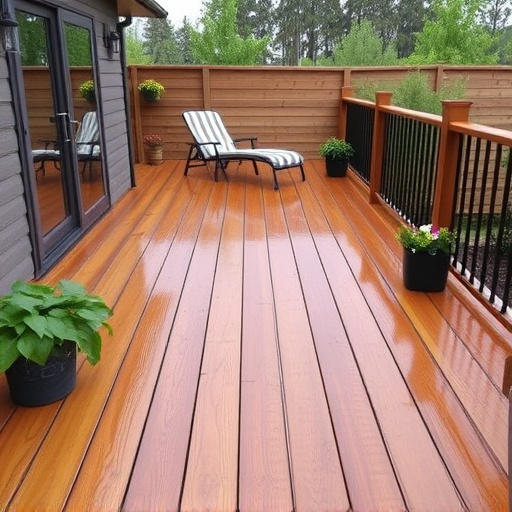
Selecting wood for a custom deck balances durability, aesthetics, and maintenance. Softwoods like ce…….
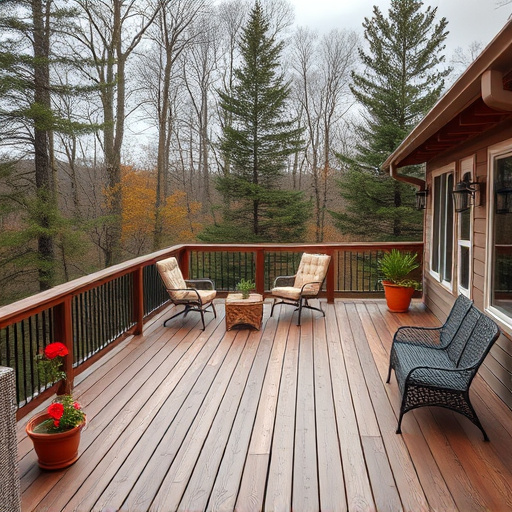
When designing a custom deck, prioritize robust weather protection with durable roofing materials li…….
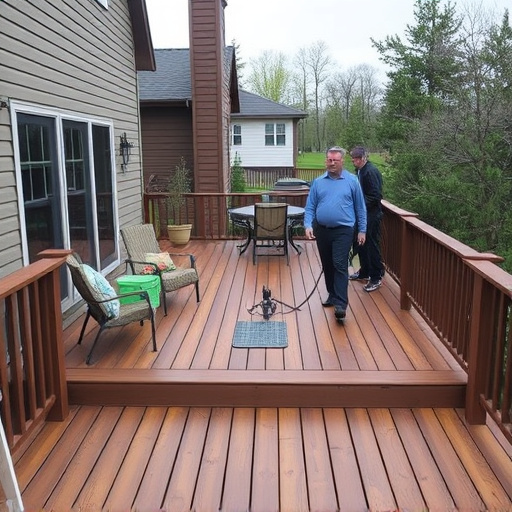
Custom decks are strategic investments enhancing outdoor living spaces with tailored style, function…….
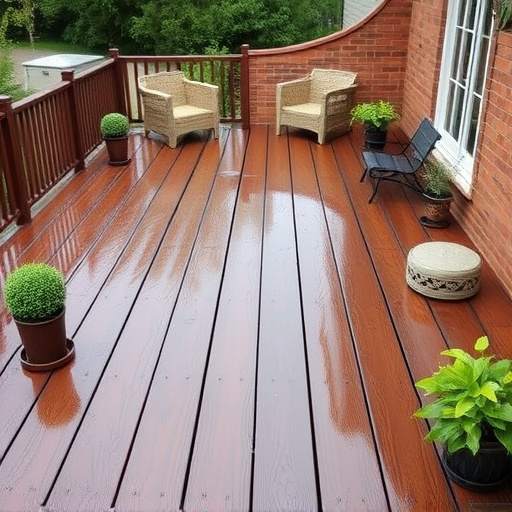
Regular cleaning, pressure washing, debris removal, and seasonal care are essential for maintaining…….
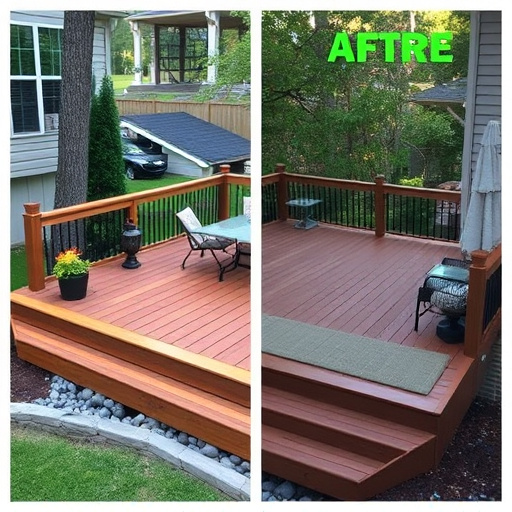
When building a custom deck, consider space, use, and style. Consult professionals for material choi…….
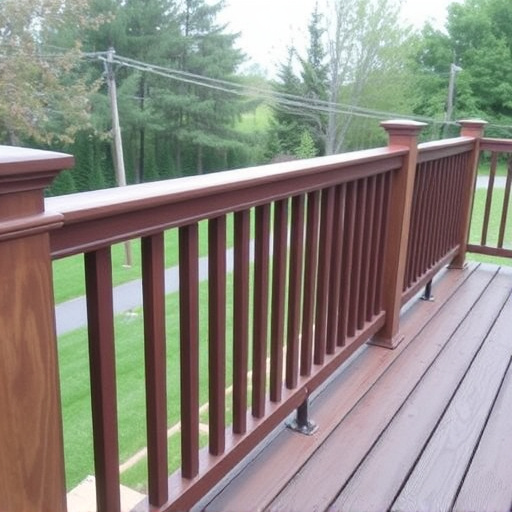
Crafting a custom deck requires meticulous planning, aligning design with purpose (relaxation or ent…….
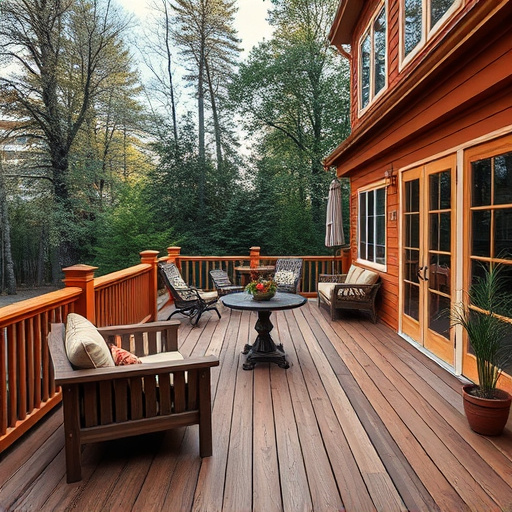
Custom decks offer versatile outdoor living solutions, tailored to homeowner preferences and propert…….
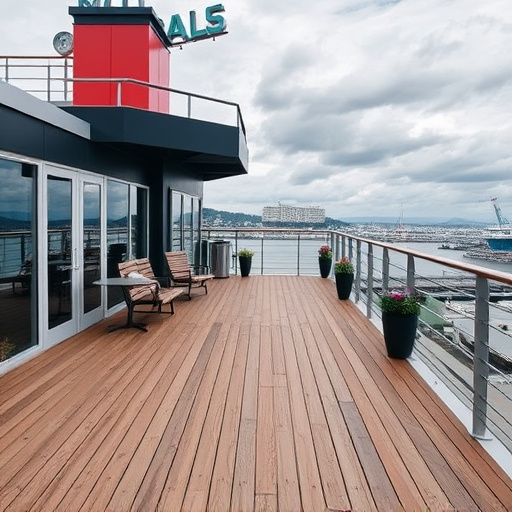
Strategic lighting design for a custom deck balances safety, functionality, and aesthetics. Consider…….
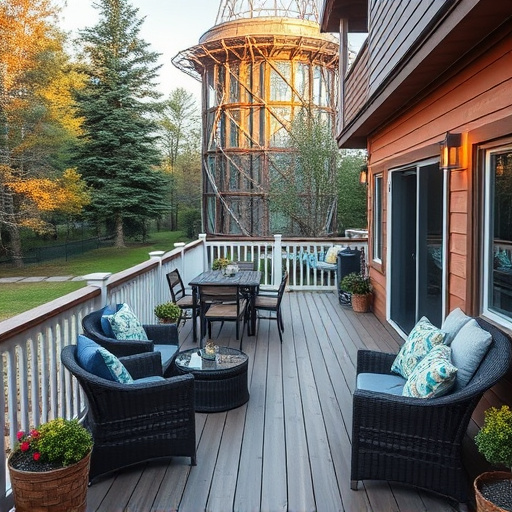
Before designing a custom deck, assess your entertainment needs and envision activities. Use profess…….